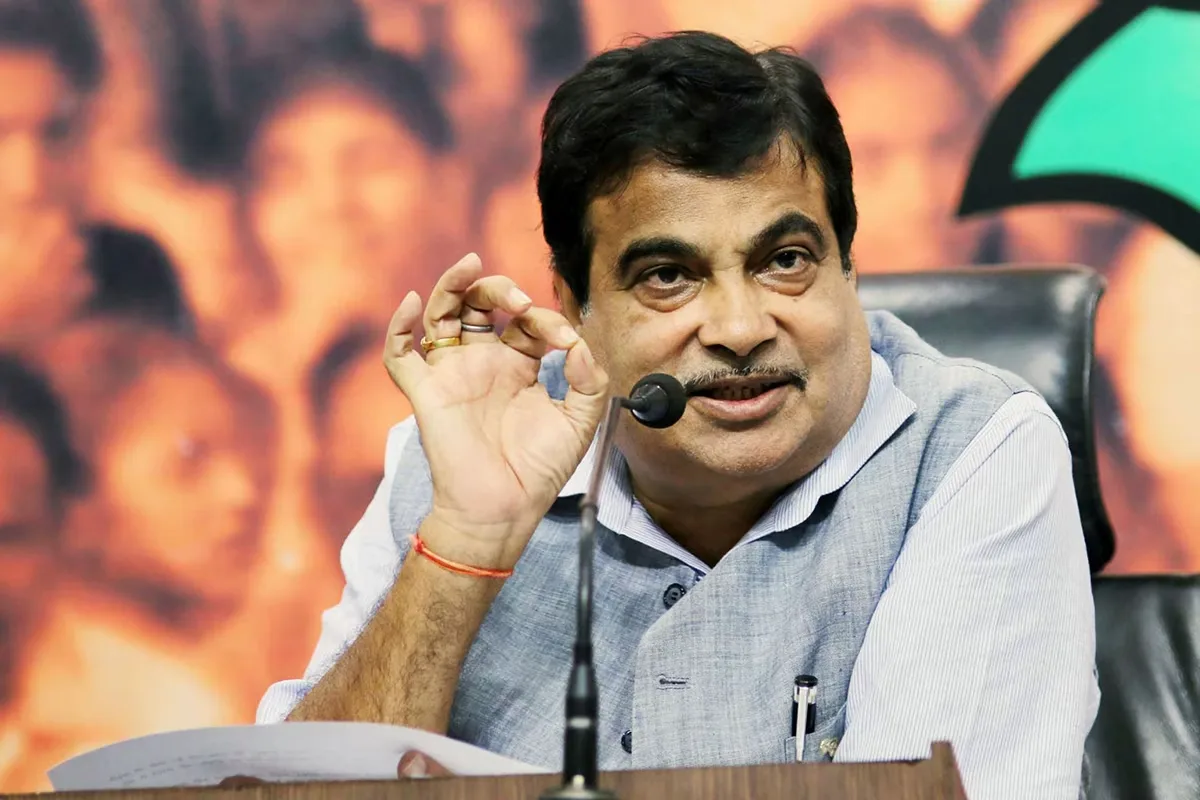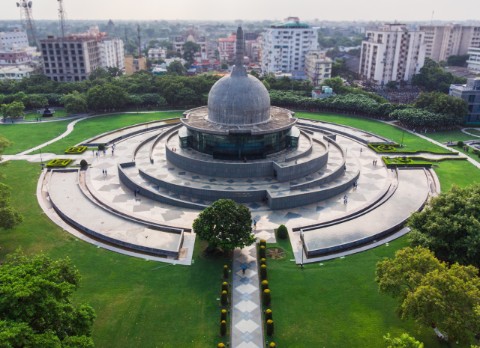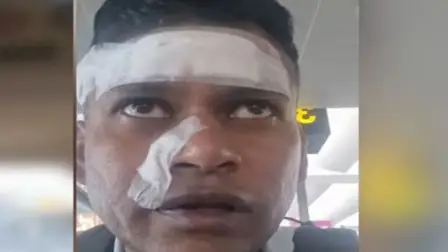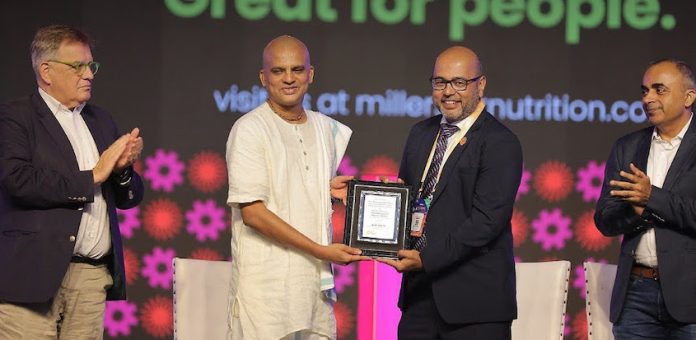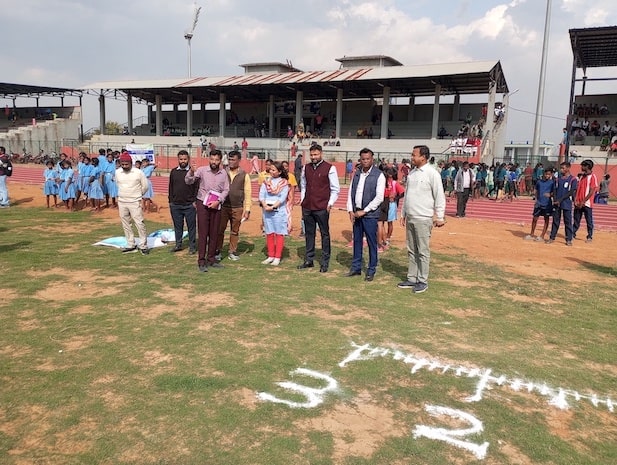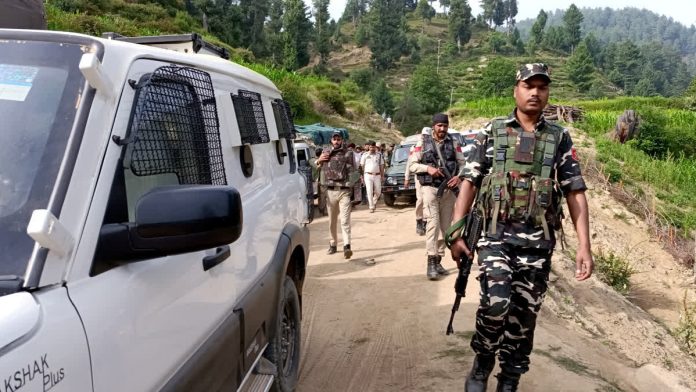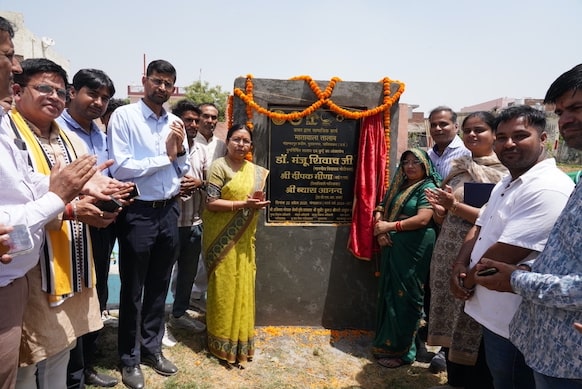Jharkhand: Eight Naxals including three high profile leaders killed in encounter
Eight Naxals including three high profile leaders were eliminated in an encounter by CoBRA commandos and police at Lugu Hills in Jharkhand’s Bokaro district on Monday. A high-ranking central committee member was among the deceased who had a Rs 1 crore reward announced after him. The central committee serves as the primary decision-making authority of the banned CPI (Maoist organisation).
The CoBRA functions as the CRPF’s specialised jungle warfare unit. This operation aligns with the government’s objective to eliminate Naxalism by March, 2026.
Naxal members who were killed
The deceased included central committee member Prayag Manjhi (Vivek), special area committee member Arvind Yadav (Avinash), zonal committee member Sahebram Manjhi (Rahul Manjhi). Mahesh Manjhi, Talu, Ranju Manjhi, Gangaram and Mahesh were also killed in the encounter.
The rewards on the militants were Rs 1 crore for Prayag Manjhi aka Vivek, Rs 25 lakh for Arvind Yadav and Rs 10 lakh for Sahebram Manjhi aka Rahul. Multiple cases of violence were registered against the deceased Naxalites.
Weapons seized during encounter
The confrontation between Naxals, Jharkhand Police and CoBRA commandos began at around 5.30 am in Lugu Hills of Lalpania area. During the operation, conducted by 209 CoBRA Battalion and state police, weapons including an AK series rifle, three INSAS rifles, a self-loading rifle, eight country-made guns and a pistol were seized.
Maoist wiped out in North Chotanagpur: DGP
Jharkhand DGP Anurag Gupta said, “With this encounter, Maoist squads in North Chotanagpur region have been wiped out. Maoists have nearly been wiped out from across the state. They only remain in Chaibasa region. We are going to relocate all our forces, including the CRPF, Jharkhand Jaguar and Jharkhand Armed Police, in the Saranda area. Our target is to eliminate all the Maoist squads in the region in the next 15 to 20 days, or certainly before the rainy season.”
Home Ministry commends Naxal encounter
The home ministry commended the security forces for their achievement in the ongoing anti-Naxal operations.
“Our march to eliminate Naxalism continues unabated. Today security forces achieved another significant success in the ongoing operation to uproot Naxalism. In an encounter at Lugu Hills in Bokaro, Jharkhand, 8 Maoists were neutralised, including a top-level naxal leader, Vivek, who carried a reward of Rs 1 crore, and two other notorious Naxalites. The operation is being continued. Applaud our security forces,” official X account of the Home Ministry posted on Monday.
Chhattisgarh CM to meet Amit Shah to review anti-Naxal operations
Meanwhile, Chhattisgarh Chief Minister Vishnu Deo Sai is scheduled to meet Union Home Minister Amit Shah in New Delhi on next Monday to review anti-Naxal operations. Over 140 Maoists have been eliminated in Chhattisgarh this year, a state which is considered as a stronghold of Left Wing Extremism.
Personal Loan EMI Calculator: A Tool to Streamline Your Finances
Managing loan repayments can be challenging if you don’t plan your finances properly.
Taking a Personal Loan comes with the responsibility of timely EMI payments, and a structured approach is necessary to avoid financial strain. This is where a Personal Loan EMI calculator becomes useful.
A Personal Loan EMI calculator is an online tool that helps borrowers estimate their monthly installments based on loan amount, tenure, and interest rate.
It simplifies financial planning, ensuring that borrowers take a loan they can comfortably repay without disrupting their budget.
This guide explains how a Personal Loan EMI calculator works, its benefits, and how it differs from a Personal Loan eligibility calculator.
How a Personal Loan EMI Calculator Works
A Personal Loan EMI calculator computes the monthly instalment based on three key factors:
- Loan amount: The total amount borrowed from the lender.
- Interest rate: The rate at which interest is charged on the loan.
- Loan tenure: The repayment period chosen by the borrower.
The EMI is calculated using the formula:
EMI = [P x R x (1+R)^N] / [(1+R)^N – 1]
Where:
P = Principal loan amount
R = Monthly interest rate (Annual rate/12/100)
N = Loan tenure in months
For example, if you take a Personal Loan of ₹ 5 Lakh at an annual interest rate of 12% for five years, the EMI can be easily determined using the calculator instead of manual calculations.
Benefits of Using a Personal Loan EMI Calculator
1. Helps in Budgeting and Financial Planning
Knowing your EMI in advance helps in planning monthly expenses. It ensures that repayments do not impact essential financial commitments like rent, utility bills, or savings.
2. Provides Accurate EMI Estimations
Manual calculations can lead to errors. A Personal Loan EMI calculator ensures accuracy, giving the exact EMI amount within seconds.
3. Saves Time and Effort
Instead of manually applying formulas, borrowers can get instant results by entering basic loan details into the calculator.
4. Helps Compare Loan Offers
Different lenders offer varying interest rates and tenures. The calculator allows borrowers to compare different loan options to find the most suitable one.
5. Determines the Ideal Loan Tenure
Borrowers can adjust the tenure in the calculator to find a balance between affordable EMIs and total interest payable.
How to Use a Personal Loan EMI Calculator Effectively
Using a Personal Loan EMI calculator is simple and requires only three steps:
-
Enter the Loan Amount: This is the total amount you wish to borrow.
-
Select the Interest Rate: Use the interest rate provided by the lender.
-
Choose the Loan Tenure: This is the repayment period in months or years.
Once these details are entered, the calculator instantly displays the EMI amount, total interest payable, and total repayment amount. Borrowers can tweak these values to see how changes in tenure or loan amount affect the EMI.
Common Mistakes to Avoid When Using a Personal Loan EMI Calculator
1. Ignoring Additional Charges
Many borrowers focus only on the EMI and overlook other charges like processing fees, prepayment penalties, and GST. These can add to the total cost of the loan.
2. Choosing a Long Tenure for Lower EMIs
Opting for a longer tenure may reduce monthly payments, but it increases the total interest paid over time. Borrowers should strike a balance between affordability and total cost.
3. Not Checking Interest Rate
Checking the interest rate is essential when applying for a Personal Loan. It determines the total repayment amount and EMI amount to be paid every month. A higher interest rate can lead to a higher EMI amount which can be hard on your budget.
4. Overestimating Repayment Capacity
Borrowers should ensure that EMIs do not exceed 30-40% of their monthly income. Taking a high loan amount without proper assessment can lead to financial strain.
Alternatives to a Personal Loan EMI Calculator
While online EMI calculators are convenient, some alternatives include:
-
Bank EMI charts: Some banks provide pre-calculated EMI tables based on interest rates and tenures.
-
Excel formulas: Borrowers can use spreadsheet functions like PMT in Microsoft Excel to calculate EMIs.
-
Manual calculations: Although time-consuming, applying the EMI formula manually can help understand the process.
However, none of these methods match the speed and accuracy of an online Personal Loan EMI calculator.
Conclusion
A Personal Loan EMI calculator is an essential tool for anyone planning to take a Personal Loan. It helps estimate monthly payments, compare loan options, and ensure that borrowers choose the right tenure and amount.
Before applying for a loan, using a Personal Loan eligibility calculator can help determine the amount you qualify for, while the EMI calculator ensures that repayments remain affordable. By using these tools wisely, borrowers can manage their loans effectively without financial stress.
Bengaluru Road Rage Twist: IAF Officer Booked After CCTV Shows He Initiated Assault
A road rage incident in Bengaluru has taken a new turn following the emergence of CCTV footage that challenges initial accounts provided by the involved parties.
On April 21, 2025, Wing Commander Shiladitya Bose and his wife, Squadron Leader Madhumita Dutta, were en route to Kempegowda International Airport when they encountered Vikas Kumar, a 27-year-old call centre employee, on Old Madras Road. According to Dutta’s complaint, Kumar was riding rashly and allegedly attacked them after noticing the DRDO sticker on their vehicle, shouting, “This is Kannada land.”
Bose Recorded Himself, Video Went Viral
In response, Bose recorded a video showing his injuries and posted it on social media, accusing Kumar of assault. The video quickly went viral, garnering widespread attention.
However, subsequent CCTV footage from nearby establishments painted a different picture. The footage showed Bose confronting Kumar aggressively, with Bose appearing to initiate the physical altercation. Dutta was also seen engaging in verbal exchanges during the incident.
Vikas Kumar Files Counter FIR
Based on this new evidence, Kumar filed a counter-complaint, accusing Bose of attempting to kill him during the confrontation. An FIR was registered under sections 109 (abetment of a crime) and 115 (attempt to commit a crime) of the Bharatiya Nyaya Sanhita (BNS).
In turn, an FIR was filed against Bose, charging him with assault and attempting to murder. Police have initiated investigations and are analysing all available footage to ascertain the sequence of events.
Both individuals have been arrested, and the Bengaluru police are continuing their probe into the incident.
CSR News: Millers for Nutrition, Fortify Health, and The Akshaya Patra Foundation Unite to Improve Nutrition in India
Millers for Nutrition, a coalition of key food fortification stakeholders dedicated to helping millers fortify staple foods, is proud to announce a partnership with Fortify Health and The Akshaya Patra Foundation, an implementing partner of the PM POSHAN program, to supply fortified wheat flour to 3416 schools in Gujarat. The flour will be used to make meals for over 400,000 children.
As part of this initiative, millers including Century Industries (Ahmedabad), Shakti Food Industries (Bhuj), Achyut Cereals & Pulses (Jamnagar), Shreeji Food Products (Vadodara), Momai Traders (Bhavnagar), and Giriraj Food Product (Surat) will collectively supply about 350 metric tons of fortified wheat flour every month to Akshaya Patra’s centralized kitchens in these cities, ensuring a steady and nutritious food supply for students.
“Millers for Nutrition is proud to partner with Fortify Health and The Akshaya Patra Foundation to enhance nutrition in India,” said Monojit Indra, Senior Practice Lead, TechnoServe. “Together, we can make a meaningful impact on the health and well-being of millions of children across the country.”
Over the past year, Millers for Nutrition, in collaboration with Fortify Health, The Akshaya Patra Foundation, and the Gujarat Roller Flour Millers Association, has conducted fortification trainings in Gujarat to help millers produce high-quality fortified wheat flour. Demonstrating a win-win-win, the initiative has successfully scaled up wheat flour fortification, enhanced children’s nutrition, and supported miller businesses.
Sri Bharatarshabha Dasa, Trustee and National President at The Akshaya Patra Foundation, said, “We at The Akshaya Patra Foundation are honored to collaborate with Millers for Nutrition and Fortify Health in this transformative initiative. By integrating fortified wheat flour into the meals of over 400,000 children in Gujarat, we are not just addressing nutritional needs but are actively contributing to a brighter, healthier future for the next generation. This partnership stands as a testament to the power of collaborative effort in making substantial health improvements across communities. Together, we are setting a remarkable precedent for nutritional welfare in India.”
Tony Senanayake, CEO at Fortify Health, said, “Fortify Health is proud to collaborate with The Akshay Patra Foundation leading the way in institutional nutrition across Gujarat. They are delivering high-quality, iron-fortified chakki atta through six central kitchens, reaching over 4 lakh vulnerable individuals, including school children under PM-Poshan. This partnership demonstrates how simple, scalable interventions can effectively improve public health and nutrition outcomes in a state with a high anaemia burden.”
Disclaimer: This media release is auto-generated. The CSR Journal is not responsible for the content.
Murshidabad violence: West Bengal Govt to probe delay in Police Action
The West Bengal Police have decided to launch an internal investigation into allegations of lapses and delayed response during the recent violence in Murshidabad’s Shamsherganj. Officials have stated that a full-fledged probe will begin once the situation in the area returns to normal.
Despite repeated calls for help from residents, police reportedly failed to respond in time.
In a preliminary administrative shake-up, the officers-in-charge (OCs) of Shamsherganj and Suti police stations have been removed from their posts and two Inspectors-in-Charge (ICs) have been appointed in their positions. “Further changes in the local police hierarchy will be made as part of the action against the alleged delay,” said a senior police officer.
Tensions remain high in Shamsherganj following a wave of violence that left several villages in ruins and three people dead. While calm is gradually being restored with the deployment of central forces, serious questions are being raised about the role—and delay—of the police during the attacks. It was alleged that negligence and failure to act in time triggered the attack on a particular community of people.
According to multiple accounts from residents, the violence on April 12 unfolded over several hours without any police intervention. Villagers claim they began calling the police as early as 9 a.m., reporting attacks, arson and looting across at least five villages. However, they allege that their cries for help went unheeded for hours. By the time the police arrived—allegedly four hours after the initial calls—dozens of homes had been ransacked and set ablaze.
“Our initial findings show that a large police contingent was stationed just one-and-a-half kilometers away from the violence-hit villages,” said the officer, adding, “The investigation will focus on why it took them so long to respond and reach the affected areas.”
In Jafrabad, the brutality reached its peak. A father and son were killed by a mob. While the father died at the scene, residents believe the son could have survived had he received timely medical assistance. An initial autopsy report confirmed that the young man died from excessive bleeding—fueling claims that a delay in police response cost him his life.
Central forces present, but no action
Adding to the controversy is the fact that three companies of central paramilitary forces were reportedly stationed in Shamsherganj at the time of the attacks. A large police force, including senior officers, was also present in the area. Yet, they failed to intervene until the violence had run its course.
A section of the police has suggested that they were unaware of the ongoing attacks because the local police failed to relay the information in time. This has led to further criticism, with villagers questioning why local officers, even after receiving multiple distress calls, delayed reporting the violence and did not mobilise immediately.
Was It a Planned Attack?
Several officers have expressed concern over the apparent planning behind the violence. Bombings and killings across multiple villages suggest a level of coordination that, they argue, should have been detected by the police intelligence network. The failure of the intelligence department to foresee or intercept the threat has become a major point of contention.
The unrest first began on April 8 in areas like Suti, Dhulian, and Shamsherganj over opposition to the amended Waqf Act and escalated dramatically by April 11. Although a temporary calm was restored with the presence of central forces, fresh violence erupted the very next morning—raising questions about both preparedness and intent.
As the state police face increasing scrutiny, villagers continue to demand justice and accountability, not just for the violence that took place, but for what they see as a complete breakdown in the duty of law enforcement.
CSR News: District Administration of Khunti District Empowers Local Sports Initiatives
Utkarsh: Centre of Excellence for Sports, a grassroots development initiative in Khunti, Jharkhand, is redefining what’s possible when youth development, rural empowerment, and sporting excellence converge. Spearheaded by the District Administration, Khunti, with field support from the Roots Foundation, the project represents a blend of vision, strategy, and execution on the ground. Utkarsh CoES initiated in January 2024 by the District Administration, Khunti, brings together structured sports training, academic education, and personal development under one integrated program for children from remote and underserved areas. The goal is to provide young athletes with access to quality training and educational opportunities without compromising either.
As part of the project, nearly 20 scouting trials were held across all blocks of the district, covering more than 5,000 students. From this pool, 100 children aged between 12 and 17 were selected for a residential program in hockey, football, and athletics. These athletes now undergo regular training under professional coaches and live in a facility that supports both sporting and academic pursuits. Utkarsh CoES guarantees access to formal education by providing daily transportation to designated government schools. The initiative also includes structured academic schedules, nutritional meals, and career counselling support, creating a balanced ecosystem for overall development.
Within 10 months of its launch, the project has recorded encouraging results. A total of 27 athletes have represented Jharkhand at national-level tournaments, 72 have competed at the state level, and six athletes have progressed to higher Centres of Excellence within the state. Several others have participated in tournaments outside the district, gaining competitive exposure.
The initiative is being implemented under the leadership of Deputy Commissioner Lokesh Mishra (IAS), who states, “Project Utkarsh is not just a platform for talent development; it’s a powerful step towards change, opportunity, and future-building for Khunti’s talented generation.” He also appreciated that Roots Foundation trained the players in the right direction, keeping in mind the guidelines of various sports, which ensured that the children faced no difficulty in representing Khunti district.
Anisha Kumari, a 15-year-old student from Ganaloya village in Khunti, is a shining example of this transformation. She is now competing at the state level in hockey and shared, “This project has been life-changing for me. I’m watching my dreams come true here.”
Utkarsh reflects the potential of collaborative models in rural India, where administrative commitment and on-ground execution come together to build long-term impact. It is a true inspiration—one that should be replicated across states and by the central government. It underlines the role of structured opportunities in enabling children from tribal communities to access professional sports and quality education simultaneously.
Utkarsh CoES follows a culturally rooted approach, integrating local traditions at its core, ensuring a deeper connection with the student-athletes. This initiative has become a prime example of promoting sports culture in Khunti, bringing rural talent to the forefront, and helping athletes excel in their respective sports. It is a model that should be adopted across districts and nationally.
Disclaimer: This media release is auto-generated. The CSR Journal is not responsible for the content.
Terrorists Target Tourists in Pahalgam’s Baisaran Valley, 27 Dead; Several Injured
A serene afternoon in one of Kashmir’s most cherished tourist spots turned tragic today after terrorists opened fire on a group of visitors in the upper reaches of Baisaran Valley, Pahalgam. Initial reports suggest 27 dead and at least five to seven tourists are reported to have sustained injuries in the attack.
According to officials, the assailants, believed to be in camouflage, targeted a group of tourists in Baisaran a scenic meadow only reachable by foot or horseback. Gunshots were first heard in the area around noon, following which security forces and emergency medical personnel rushed to the scene.
This suspected terror attack comes at a sensitive time for the region, coinciding with the beginning of peak tourist season in Kashmir and ongoing preparations for the annual Amarnath Yatra. The 38-day pilgrimage is scheduled to commence on July 3, via two main routes: the 48-km trail through Pahalgam in Anantnag and a 14-km route via Baltal in Ganderbal. Both tracks are expected to see thousands of pilgrims, heightening concerns about security in the region.
Injured Tourists Are From Rajasthan
Initial reports indicate that some of the injured tourists may be from Rajasthan. The Jammu and Kashmir Police have confirmed that at least four to five people were hurt, including some locals.
Security agencies suspect that the attackers aimed to create panic and derail the upcoming yatra by targeting areas popular with tourists. The operation to locate and neutralise the perpetrators is currently underway, and the entire Baisaran Valley has been cordoned off.
The Jammu and Kashmir National Council party also responded swiftly to the incident. Party spokesperson Umesh Talashi posted on X (formerly Twitter), confirming the attack and requesting immediate intervention from Chief Minister Omar Abdullah and other state leaders.
Victim’s Pleads for Help
A distraught woman, overwhelmed with emotion, desperately begged for help to save her husband after witnessing a horrifying shooting incident targeting tourists in Pahalgam, Jammu and Kashmir, which claimed one life.
Through her sobs, she repeatedly cried out, “Please save my husband,” her remaining words lost in anguish as she struggled to speak through her tears.
Tension Rise Amid Infiltration Fears
The broader security context in the Union Territory has remained tense in recent weeks. Heightened alerts had already been issued following provocative comments from Pakistan’s Army Chief, raising fears of cross-border infiltration attempts. Union Home Minister Amit Shah, during a recent visit to Jammu and Kashmir, had emphasised a zero-tolerance policy towards terrorism and instructed law enforcement agencies to intensify surveillance especially in vulnerable zones like pilgrimage routes.
Tourism officials and security personnel now fear that the incident might impact the state’s tourism prospects and disrupt upcoming religious gatherings. A senior police officer described the attack as a “deliberate provocation meant to instill fear,” but reaffirmed that authorities are prepared to ensure the safety of tourists and pilgrims.
As the rescue and investigation operations continue in Pahalgam, officials have urged the public to remain calm and avoid speculation until more verified details emerge.
CSR News: Revival of 24,000 KL Local Pond in Ghaziabad; Moving Closer to Achieving Water Positivity
Dabur India Limited, a leading name in natural and Ayurvedic healthcare, today announced the successful revival and rejuvenation of the Matawala pond and community well in Muradnagar block of Ghaziabad, Uttar Pradesh. The revived water body was dedicated to the community on World Earth Day today.
The revival of this water body, which now has a capacity to collect and harvest over 24,570 KL of rainwater, was undertaken as part of Dabur’s ongoing Corporate Social Responsibility (CSR) efforts and takes the company closer to its ambitious mission to become Water Positive by 2030.
The rejuvenation project involved extensive efforts to restore the pond’s ecological balance, improve water quality, and enhance biodiversity. The project included deep digging and desilting of the pond, construction of a boundary wall, and plantation around the pond to strengthen the banks and create a sustainable water management system. An improved and natural water drainage system has also been created to filter plastic waste.
The rejuvenated pond was inaugurated by Modinagar MLA Ms Manju Shiwach in the presence of Ghaziabad District Chief Development officer Mr. Abhinav Gopal. The restoration work was undertaken through Dabur’s CSR arm Jivanti Welfare and Charitable Trust, in partnership with Purva Foundation.
Speaking on the occasion, Dabur India Limited Chief Executive Officer Mr. Mohit Malhotra emphasized the importance of community-level programs for water conservation and management. “At Dabur, we recognize the critical importance of water sustainability in mitigating environmental challenges and ensuring the resilience of our communities. By rejuvenating this local pond, we are not just restoring a natural resource; we are revitalizing an entire community. This initiative aligns seamlessly with our overarching commitment to achieve water positivity by 2030.”
This revived pond is set to benefit over 150 families in the village. This pond will help increase the groundwater level and facilitate irrigation of nearby agricultural land. This will lead to enhanced crop yield for local farmers and a subsequent increase in farmer income. “Dabur’s commitment to sustainable development and community welfare shines through initiatives like these, as the company strives to create a better, brighter future for all. The rejuvenation of the pond in Ghaziabad is a testament to Dabur’s dedication to conserving and augmenting water resources for future generations,” Dabur India Limited CSR Head Mr. Byas Anand said.
Disclaimer: This media release is auto-generated. The CSR Journal is not responsible for the content.
Flute, Tabla, Violin, and Harmonium to make Traffic Jams Entertaining in India
Union Road Transport and Highways Minister Nitin Gadkari has once again proposed a law to mandate using the sounds of Indian musical instrument as vehicle horns. Speaking at an event on Monday, Gadkari said that he aims to make vehicle horns across India more pleasant and hence the sounds of instruments like flute, tabla, violin, and harmonium would be a good idea.
“I am planning to make a law that horns of all vehicles should be in Indian musical instruments so that it is pleasant to hear. Flute, tabla, violin, harmonium,” Gadkari was quoted as saying by news agency PTI.
Similar proposal by Gadkari earlier
This is not the first time that Gadkari has proposed such a law in the country. In 2021, the minister had said he was planning to introduce a law to make sound of Indian musical instruments mandatory as a horn for vehicles.
